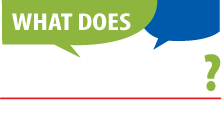Phrases starting with the letter: A B C D E F G H I J K L M N O P Q R S T U V W X Y Z
Definition of: cross
(krôs, kros) noun
1. A sacred or mystic symbol in many ancient religions, consisting of two intersecting lines, supposed to have been originally emblematic of the union of the active and passive elements in nature.
2. That which resembles a cross: to mark a ballot with a cross.
3. An ancient instrument of torture in the form of a cross, on which criminals were fastened and exposed until they died from exhaustion.
4. Any suffering borne patiently for Christ's sake; a trial; tribulation.
5. A structure in the form of or surmounted by a cross, erected in some public place for devotional or memorial purposes.
6. Biol. a A mixing of varieties or breeds of plants or animals. b The product of any intermingling of strains; a hybrid or mongrel.
7. Anything that resembles or is intermediate between two other things: a cross between prose and poetry.
8. An old English coin stamped with a cross.
9. Her. A figure used as a bearing.
10. An ornament, in some form of the cross, worn as a distinction by knights of various orders and by persons honored for exceptional merit or bravery.
11. Electr. The accidental contact of two wires so that a portion of the current from one flows to the other.
12. The geometric mean of two formulas: used in index numbers.
—to take the cross To turn crusader.
—v.t.
1. To pass, move or extend from side to side of; traverse; span.
2. To cancel, as by marking with crossed lines: with off or out.
3. To lay or place over or across: to cross the legs.
4. To intersect, as streets or lines.
5. To draw a line across.
6. To meet and pass: Your letter crossed mine.
7. To transport across: He crossed his army yesterday.
8. To make the sign of the cross upon or over.
9. To obstruct or hinder; thwart.
10. To cause, as plants or animals, to interbreed; hybridize; crossbreed.
11. Naut. To put (a yard) in place across a mast.
—v.i.
12. To intersect; lie athwart.
13. To pass, move, or extend from side to side; traverse; span.
14. To meet and pass.
15. To breed together; interbreed.
—to cross one's mind To occur to one.
—to cross one's palm
1. To pay a fortune–teller by marking crosses on his or her palm with a coin and then laying the coin in the fortune–teller's hand.
2. To pay someone money; make a bribe.
—to cross swords To fight with swords; hence, to contest with.
—to cross up Colloq. To play the traitor to; betray: He crossed me up.
—adjective
1. Resulting from or expressive of peevishness or ill–humor; out of humor; disagreeable; peevish.
2. Transverse; crossing; intersecting.
3. Hybrid.
4. Contrary. See synonyms under CAPTIOUS, FRETFUL.
—adverb
1. Across; crosswise; transversely.
2. Adversely; contrarily; counter. [OE cros <ON kross <L crux]
—cross′ly adverb
—cross′ness noun
—ansate cross
The tau cross with a loop at the top: also called crux ansata. Also ansated cross. See ANKH.
—Calvary cross Her.
A Latin cross set on three graduated steps.
—Celtic cross
An upright cross having a circle behind the crossbeam.
—cross crosslet
A cross having a small cross near the end of each arm.
—cross fleu·ry (fl ′rē)
′rē)
A cross whose arms end in fleurs–de–lis.
—cross for·mée (fôr·mā′)
A cross having arms that gradually expand from the central crossing and nearly form a square. The Maltese cross is a modification of this.
—cross four·chée (f r·shā′)
r·shā′)
A cross proportioned like the Greek cross but having each extremity forked.
—fiery cross
A cross of light wood whose ends were set on fire, formerly used as a call to arms in Scotland.
—Geneva cross
A red St. George's or Greek cross on a white ground, worn by members of the Red Cross Society as a badge of neutrality.
—Greek cross
A cross formed by an upright crossing the middle of a beam of equal length. See also gammadion.
—Iron Cross
A Maltese cross awarded by Germany for conspicuous military service: instituted by Prussia in 1813.
—Jerusalem cross
A cross having four arms, each ending in a crossbar: also cross potent.
—Latin cross
A cross in which the upright is longer than the beam which crosses it near the top: the cross used by the ancient Romans for crucifixions: also called crux immissa.
—Lorraine cross
A cross having two horizontal arms, the lower one longer than the other: also cross of Lorraine.
—Maltese cross
An eight–pointed cross formed by four arrowheads joining at their points: the badge of the Knights of Malta, worn as an order of chivalry: also Cross of Malta.
—Papal cross
A cross having three crossbars or transoms, the top one the shortest and the bottom one the longest.
—Patriarchal cross
A cross having two horizontal arms like those of the Lorraine cross but placed nearer together.
—St. Andrew's cross
An oblique cross in the form of the letter X: also called crux decussata. See SALTIRE.
—St. George's cross
The cross of St. George, the patron saint of England: same shape as the Greek cross.
—St. Patrick's cross
A cross like the diagonal St. Andrew's cross.
—tau cross
A cross in the form of a T: also called crux commissa. Also St. Anthony's cross.
See TAU.
—Victoria Cross
A Maltese cross awarded for conspicuous bravery to members of the British army or navy and the Royal Air Force: instituted in 1856.


Comment about this word, ask questions, or add new information about this topic: